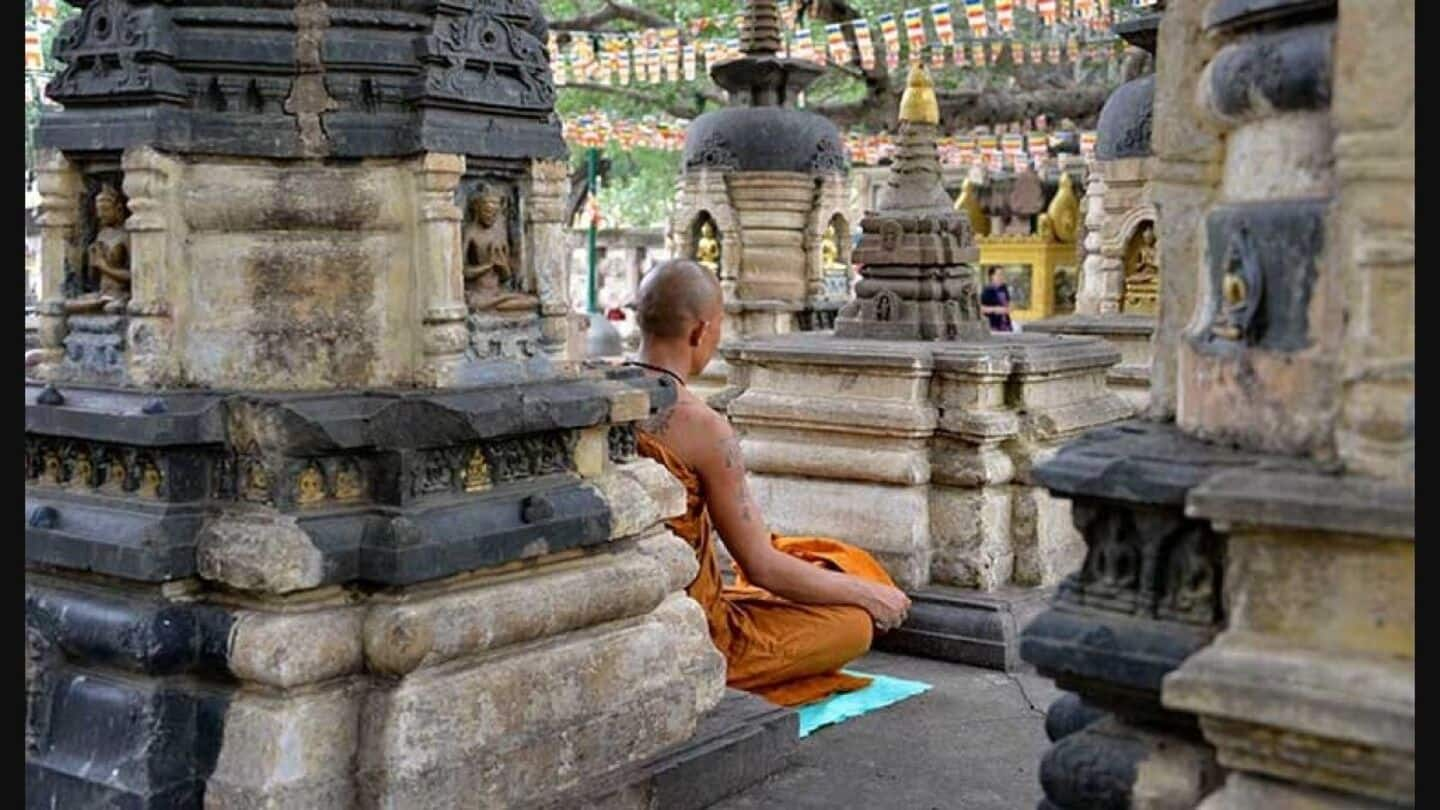
Buddhist monks seek control of Mahabodhi temple; who controls it?
What's the story
The peaceful temple town of Bodh Gaya, located on the banks of Niranjana river in Bihar, is undergoing a major upheaval.
The local Buddhist community has sounded a clarion call, demanding exclusive control over the Mahabodhi Temple.
Buddhist monks have been staging peaceful protests near Domuhan, a government-owned land just outside the main temple zone, for over two months.
Their main demands include repealing the Bodh Gaya Temple Act (BT Act), 1949, and exclusive authority over Mahabodhi Temple management.
Protest details
Buddhist monks protest against Bodh Gaya Temple Act
Presently an eight-member Bodh Gaya Temple Management Committee (BTMC) governs temple affairs under a 75-year-old law.
The BTMC has four Buddhists and four Hindus, with the Gaya District Magistrate as ex-officio chairperson.
Interestingly, the four present Buddhist members of the temple administration committee have distanced themselves from the protest, claiming that the major players have "personal ambitions."
Committee composition
Current management committee sparks controversy
But the demonstrators say that this system undermines Buddhist control and is a colonial-era compromise rather than genuine religious liberty.
Akash Lama, the monk leading the protest, asked why members of other religions are managing their temple's administration.
"Why should there be members from other religions running our temple management? Our demand is not new, but now, the Buddhist community is determined to continue protesting on the street until their demands are fulfilled," he told the Hindu.
Support network
Diverse support for the protest
They argued that in recent years, Hindu monks have increasingly performed rites that contradict the spirit of Buddhism, while other, more subtle forms of protest have failed.
The demonstrators emphasize that the Buddha was opposed to Vedic rituals. According to protester Abhishek Bauddh, all religions in India "take care and manage their own religious sites."
"So why are Hindus involved in the committee of a Buddhist religious place?"
History
Historical context of temple management
Hindu monks took over the Bodh Gaya site after the decline of Buddhism in India due to Islamic invasions in the 12th century.
In 1590, Shaivite Ghamandi Giri established a mutt near the temple. Over time, the belief that Buddha was a Vishnu incarnation became one reason for Hindu custodianship.
In the 19th century, Buddhist revivalist Anagarika Dharmapala began proceedings against Hindu mahants to restore Buddhism at this shrine.
Act impact
BT Act and ongoing disputes
After independence, the Bihar government passed the BT Act to end the persistent disputes.
Though it permitted worship by Hindus and Buddhists, the act formalized a joint management structure that Buddhists have never accepted completely.
In the 1990s, then CM Lalu Prasad Yadav even drafted a bill for transferring complete control to Buddhists, but it wasn't passed.
The All-India Buddhist Forum (AIBF), founded in 2015, has been consistently fighting for the cause through protests and rallies.